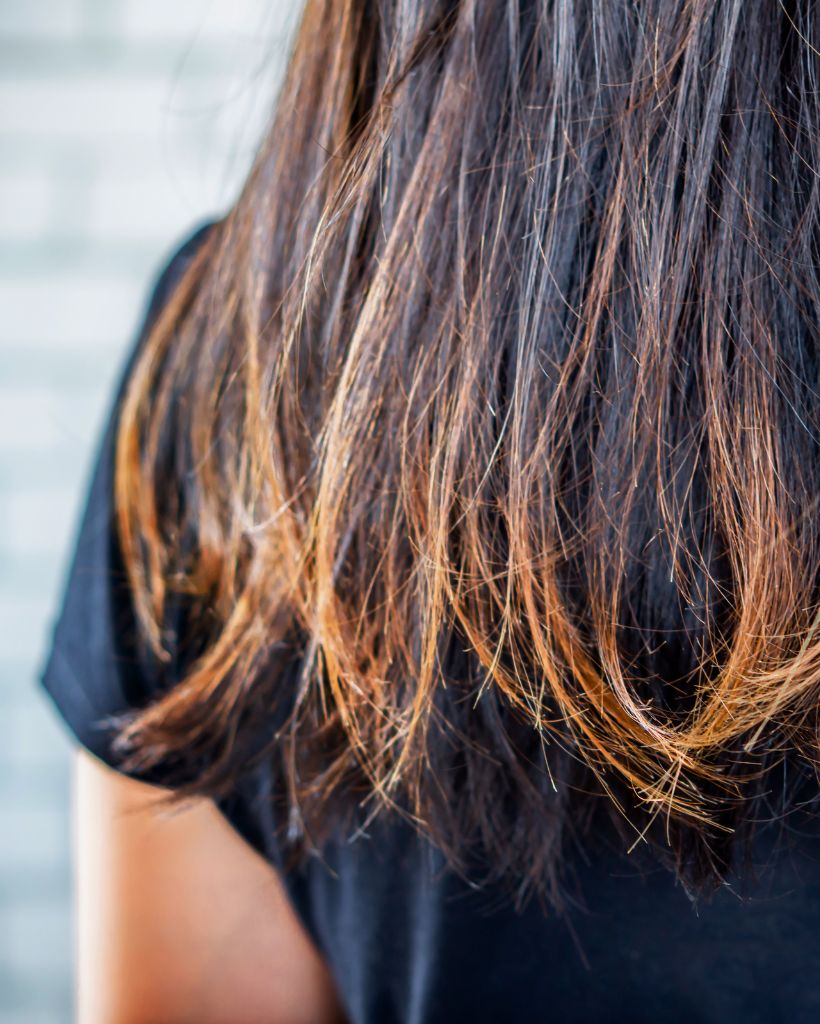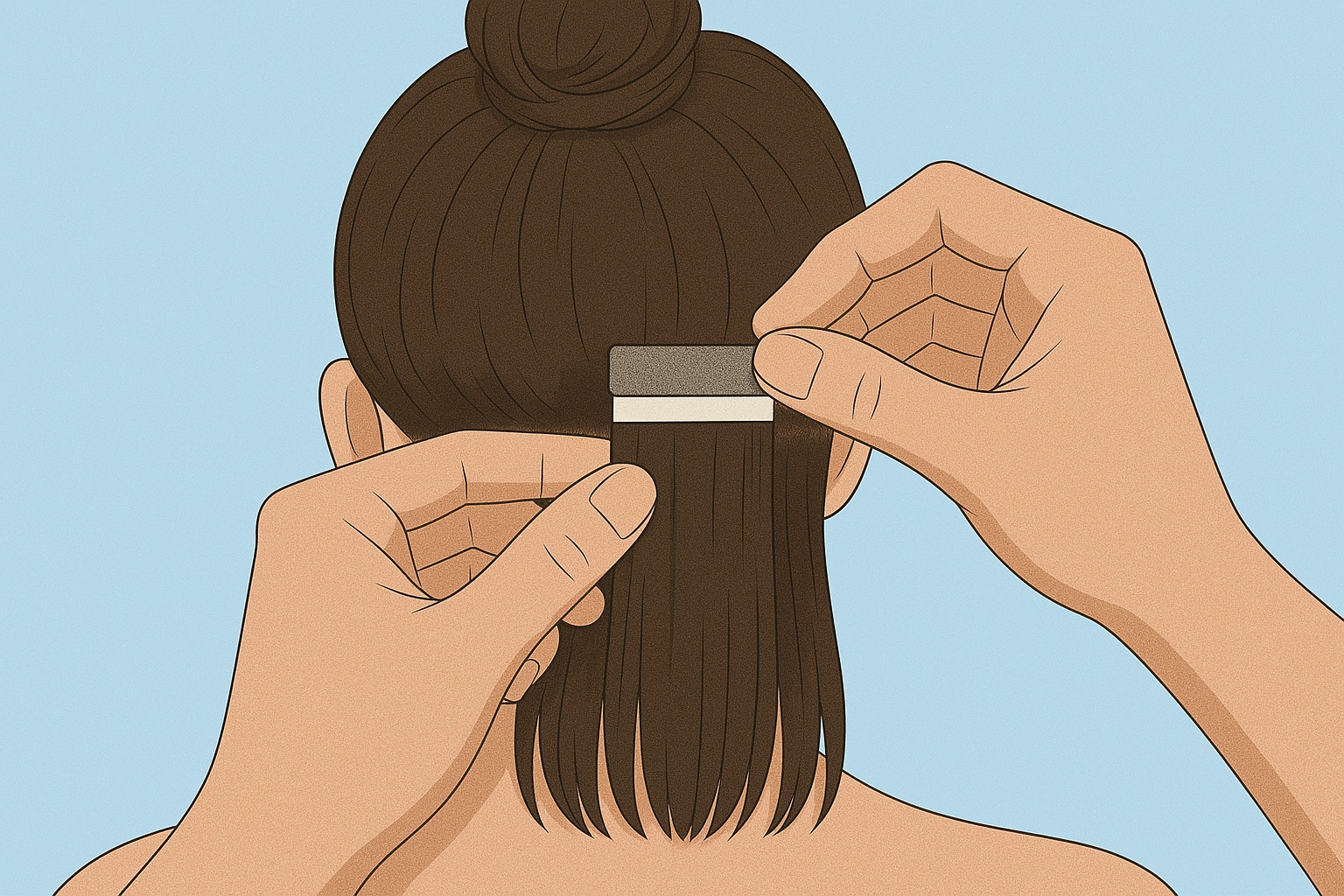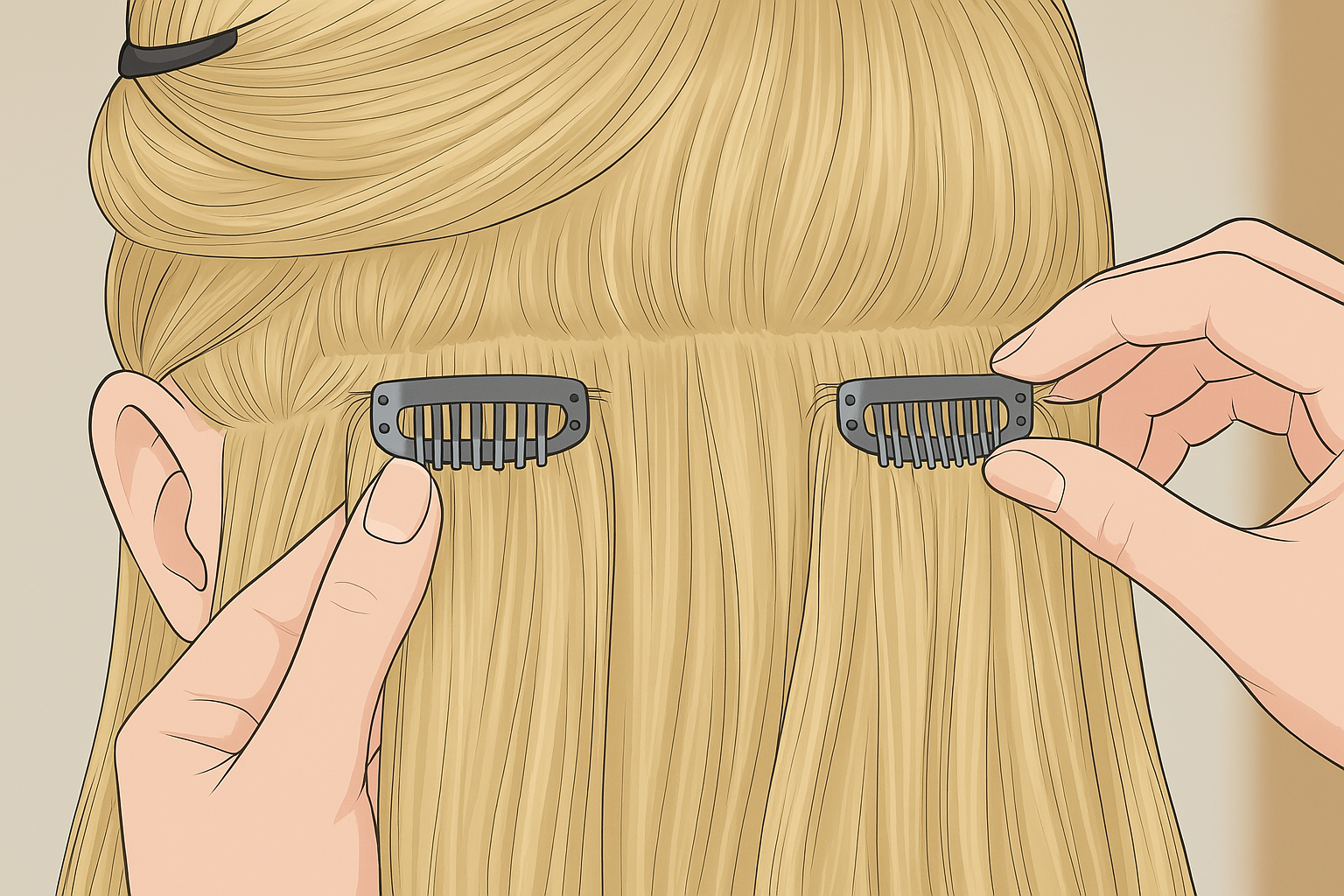Table of Contents
ToggleHair damage is a common concern for many, resulting from heat, chemicals, environmental factors, or even physical handling. Whether you’re dealing with dry, brittle strands or breakage that won’t seem to stop, repairing the damage is key to restoring the vibrancy and health of your hair.
This comprehensive guide explores the different types of hair damage, effective treatments, and actionable tips for repair and prevention. By tailoring your approach to your unique needs, you can achieve healthier, stronger hair over time.
Types of Hair Damage and How to Repair Them
Understanding the specific type of damage your hair has experienced is key to effective repair. Each type requires targeted solutions to address the root cause and restore your hair’s health.
Heat Damage from Styling Tools
Damage caused by excessive use of curling irons, flat irons, and blow dryers results in dryness, split ends, and weakened strands. A hair care routine that limits heat styling can help mitigate this.
Steps to Repair:
- Use deep-conditioning masks with hydrating ingredients like shea butter or argan oil to restore moisture.
- Incorporate protein treatments to strengthen hair and repair the bonds broken by heat.
- Limit heat styling to once or twice a week and use tools with adjustable temperature settings.
- Always apply a heat protectant spray or cream before using hot tools.

Learn more about after-keratin treatment care to maintain smooth, healthy hair after heat or chemical treatments.
Chemical Damage from Bleaching, Colouring, and Perming
Chemical processes alter the internal structure of your hair, leaving it weak, brittle, and prone to breakage. Hydrating products like the best purple shampoo can help retain colour vibrancy while repairing damage.
Steps to Repair:
- Use bond-repair treatments to rebuild and reinforce the hair’s internal structure.
- Hydrate with masks or leave-ins containing glycerin, aloe vera, or coconut oil.
- Avoid overlapping chemical treatments, such as bleaching right after a perm.
- Switch to sulphate-free shampoos and conditioners to gently cleanse without stripping natural oils.
- Take breaks between chemical treatments to allow your hair to recover.
Physical Damage from Brushing, Tight Hairstyles, and Extensions
Physical damage occurs from tension and friction caused by rough handling, improper detangling, or tight hairstyles.
Steps to Repair:
- Detangle gently using a wide-tooth comb and a detangling spray.
- Avoid tight hairstyles and extensions that put excessive stress on the hair shaft.
- Use silk or satin scrunchies to minimize breakage.
- Sleep on silk pillowcases to reduce friction while sleeping.
- Apply leave-in conditioners or serums to protect strands and make detangling easier.
Environmental Damage from Sun, Pollution, and Harsh Weather
UV rays, pollutants, and changing weather conditions dry out hair and accelerate wear and tear. For curly hair prone to frizz, the best shampoo and conditioner for curly hair and frizzy hair can combat dryness and retain moisture.
Steps to Repair:
- Use hair products with UV filters to protect against sun damage.
- Rinse hair with a gentle, clarifying shampoo to remove pollutants and impurities.
- Deep-condition regularly with masks containing hydrating ingredients like aloe vera or hyaluronic acid.
- Wear hats, scarves, or caps to shield hair from harsh weather.
- Apply lightweight oils or serums to lock in moisture and reduce frizz.
10 Ways to Repair, Treat & Fix Damaged Hair
1. Lower the Temperature on Your Tools
Excessive heat strips moisture and weakens hair. Use the lowest effective temperature on styling tools and always apply a heat protectant. Explore heatless styling methods like braiding or foam rollers to reduce damage.
2. Handle Wet Hair with Care
Wet hair is fragile and prone to breakage. Gently blot it with a microfiber towel or T-shirt, avoiding aggressive rubbing. Detangle with a wide-tooth comb, starting at the ends, and avoid tying wet hair tightly.
3. Use Rich Hair Masks
Masks with ingredients like keratin and shea butter deeply hydrate and repair damage. Apply weekly, leaving the mask on for at least 20 minutes to restore strength and elasticity.
4. Embrace Leave-In Conditioners
Leave-ins provide ongoing hydration and shield hair from environmental stressors. Choose a formula suited to your hair type, and for sun protection, opt for leave-ins with UV filters.
5. Get Professional Treatments
Salon treatments like keratin or bond repair restore hair’s internal structure and enhance elasticity. Hydration treatments offer an immediate boost for extremely dry hair.
6. Strengthen Bonds with Bond-Building Products
Bond repair products like Olaplex rebuild internal hair bonds damaged by chemicals or heat. Use weekly alongside hydrating treatments for best results.
7. Trim Your Split Ends Regularly
Split ends worsen over time, travelling up the hair shaft. Regular trims every six to eight weeks prevent further damage and keep hair smooth.
8. Protect Hair from Swimming and Sun Exposure
Rinse hair with fresh water before swimming and use protective sprays or caps to reduce chlorine and salt damage. Apply UV-protective products to guard against sun damage.
9. Keep Hair Hydrated
Moisturizing shampoos, conditioners, and oils like aloe vera and coconut oil combat dryness. Stay hydrated by drinking water and using products that lock in moisture.
10. Shampoo Wisely and Use pH-Balanced Products
Wash hair two to three times a week with sulphate-free, pH-balanced shampoos. How often should you wash your hair? offers a detailed guide tailored to your hair type and needs. Rinse with cool water to seal the cuticle and retain moisture, leaving hair smoother and shinier.
How to Repair Damaged Hair Fast at Home
If you are wondering how to repair damaged hair fast at home, several effective DIY treatments are available. You can mix and match the below DIY remedies to ensure the best results possible.
DIY Hair Masks
DIY masks use natural ingredients like avocado, olive oil and honey to help restore moisture in your scalp and hair strands. As noted earlier, hair masks are some of the products that help grow hair faster while also providing nourishment.
Avoid Heat
Heat styling tools are among the primary causes of heat damage. If you are to minimise hair damage without putting in much effort, simply avoid using heat styling tools as much as possible. Instead, opt for air drying and, when needed, always apply heat-protection sprays before styling.
Leave-in Conditioners
Leave-in conditioners are one of the hair care products that add a protective barrier to your hair. They are designed to be lightweight to lock in moisture on your scalp and hair strands without causing the hair to look or feel oily. The best leave-in conditioners for your case depend on your hair type. If you have light-coloured hair, the best conditioners for blonde hair will help enhance shine and keep your locks looking healthy and vibrant.
Hair Oils
Oils like argan, castor, and coconut are excellent for deeply hydrating hair and repairing damage. If you want to quickly repair damaged hair, you should incorporate these oils into your list of hair care products. Before purchasing hair oils, make sure they are ideal for your unique hair type.

Preventing Future Damage
While repairing existing damage is crucial, prevention is equally important for maintaining long-term hair health.
1. Adopt a Healthy Hair Routine
Regular trims, gentle detangling, and deep conditioning should form the core of your routine.
2. Protect from Heat and Sun
Limit heat styling and always use UV protection sprays when outdoors.
3. Eat for Your Hair
A diet rich in vitamins and proteins supports stronger, healthier hair. Include foods like eggs, nuts, and spinach in your meals.
4. Choose the Right Products
Opt for shampoos and conditioners tailored to your hair type. Avoid harsh ingredients like sulphates and alcohol.
Repairing Damaged Hair: Final Thoughts
Restoring damaged hair takes time and consistency, but with the right strategies, it’s entirely achievable. By understanding your hair’s unique needs and incorporating targeted treatments, you can repair existing damage and prevent future issues.
If you’re unsure where to start or need personalized advice, consulting a professional can make all the difference. At Ladyandthehair, we’re here to help you on your journey to healthier, more vibrant hair. Contact us today for tailored solutions that work for you.
FAQs About Hair Damage
How Long Does It Take to Repair Damaged Hair?
The repair time depends on the damage severity. Minor issues like dryness can improve in weeks with consistent hydration, while significant damage, like breakage, may take months. Regular trims and targeted treatments accelerate recovery.
Can Split Ends Be Repaired Without Cutting?
No, split ends cannot be permanently repaired. Products may temporarily seal them, but trimming is essential to prevent further damage. Regular trims combined with protective care keep hair healthier.
What Ingredients Should I Look for in Hair Products?
Key ingredients include:
- Hydration: Aloe vera, glycerin, coconut oil.
- Strength: Keratin, collagen, hydrolyzed proteins.
- Protection: Antioxidants (vitamin E), UV filters.
- Gentle Cleansing: Sulfate-free formulas.
Choosing products with these ingredients helps restore and maintain hair health effectively.





